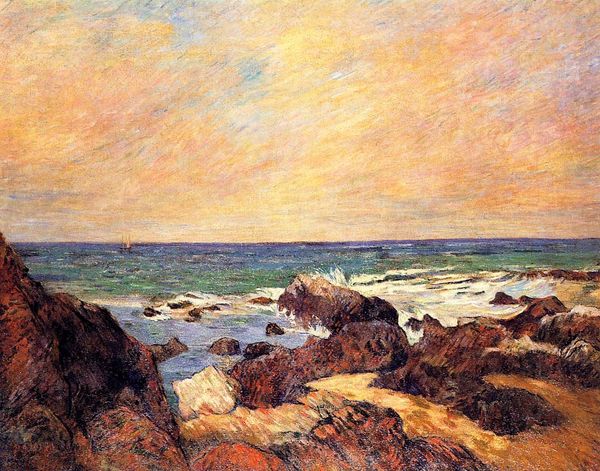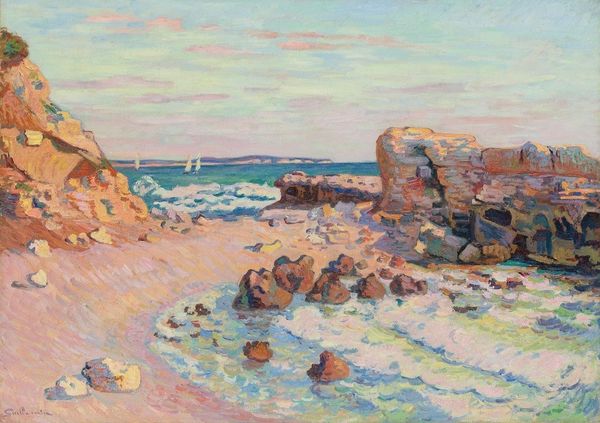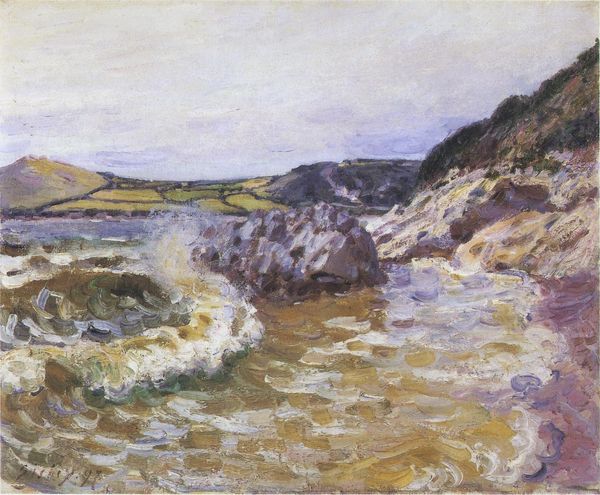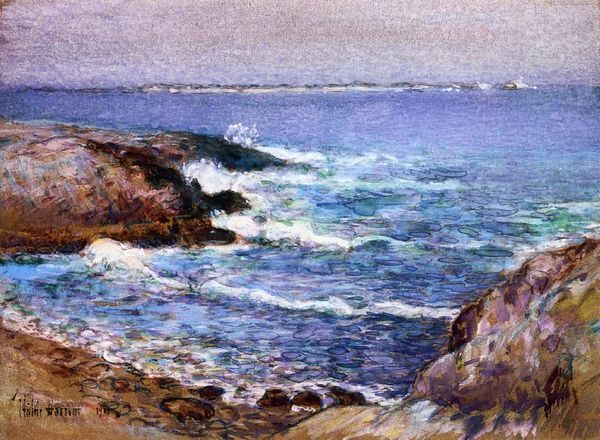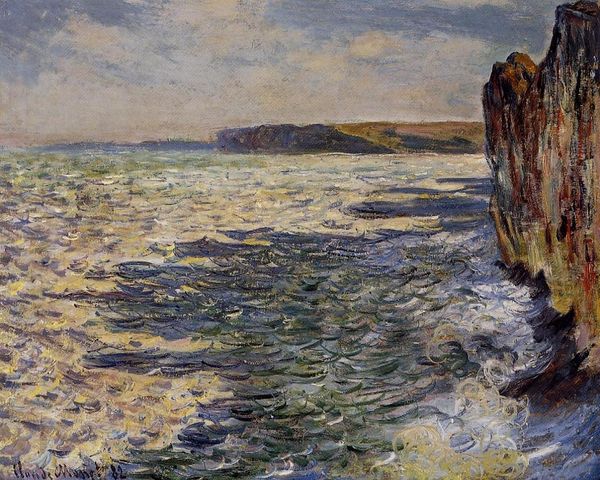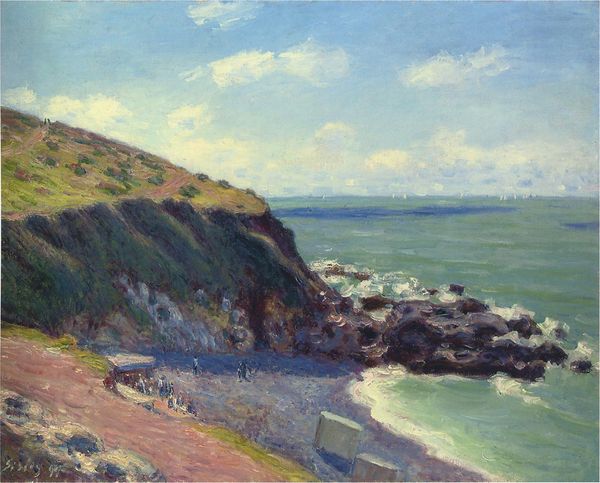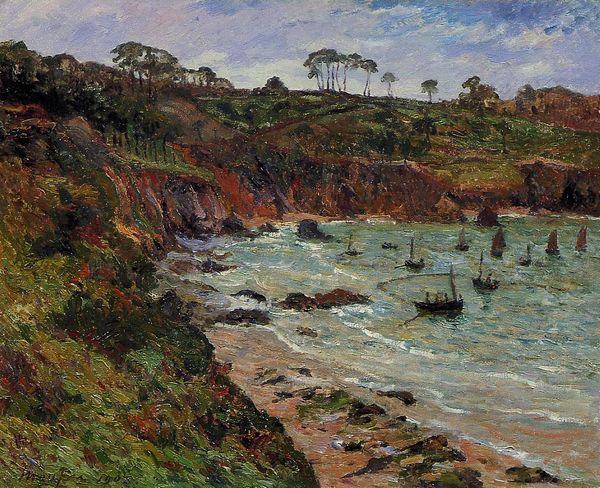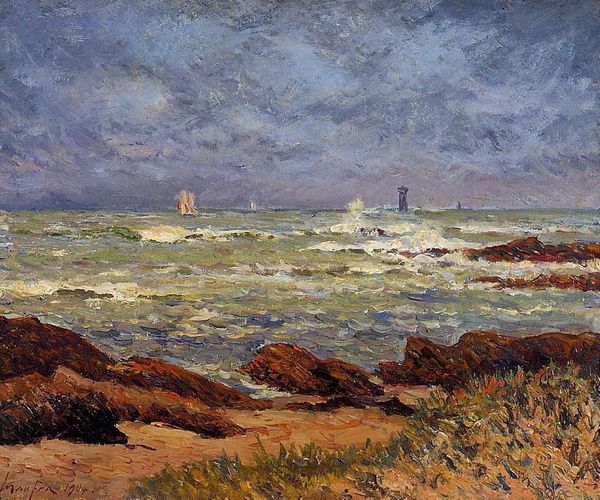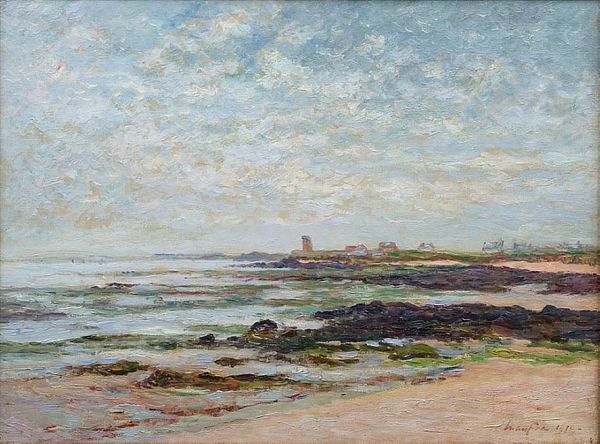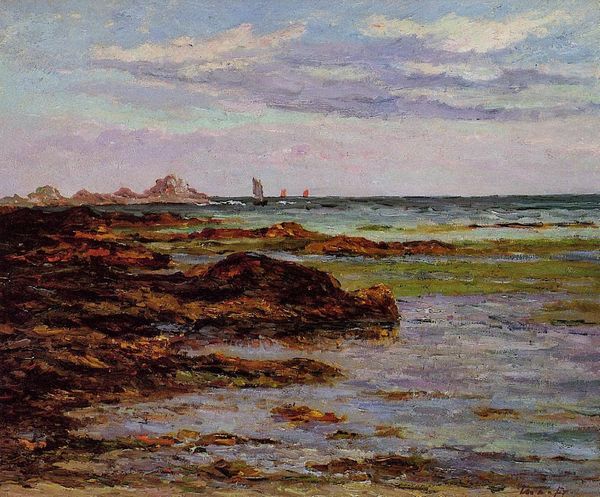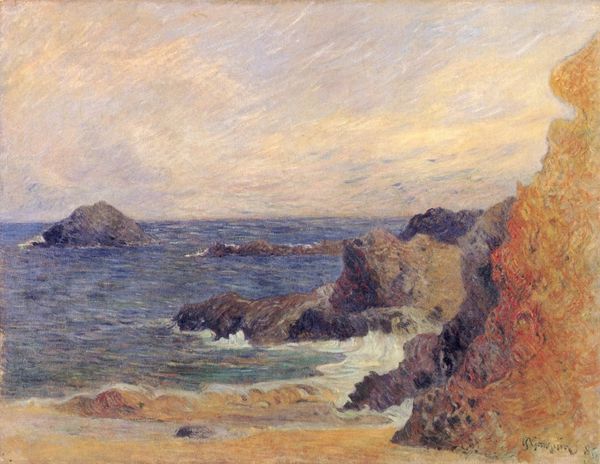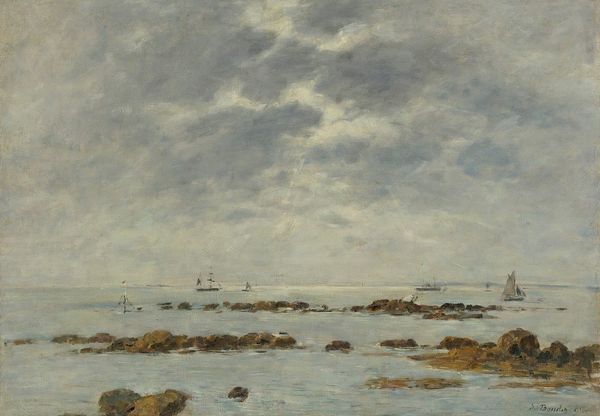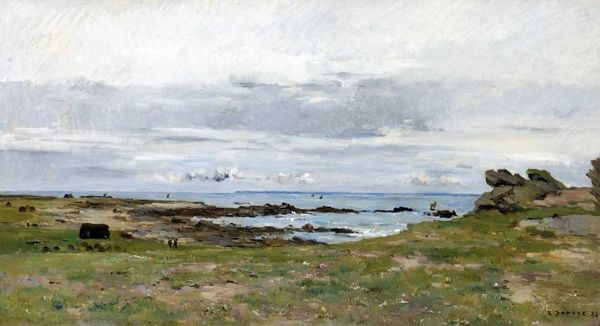
painting, plein-air, oil-paint
#
sky
#
painting
#
impressionism
#
plein-air
#
oil-paint
#
landscape
#
impressionist landscape
#
oil painting
#
seascape
#
water
#
sea
Copyright: Public domain
Editor: This is "The Rocks at Pourville, Low Tide," painted by Claude Monet in 1882. It feels so dynamic, the waves crashing against the rocks. What do you see in this piece, especially in terms of its enduring impact? Curator: I see a visual representation of the sublime. The jagged rocks, the relentless ocean – these are symbols of nature's power. Monet doesn't just depict a scene; he evokes a feeling, a sense of awe and perhaps even a touch of fear. The human figures in the distance, dwarfed by the landscape, only reinforce this idea. Consider, too, the colours. Editor: The colours do seem significant. There’s a lot of grey and white, not what I always associate with Monet. Curator: Precisely. The muted palette reflects the northern light of the Normandy coast, but it also taps into something deeper. The cool tones could represent a kind of psychological distance, a meditation on mortality reflected in the ceaseless rhythm of the sea. Editor: Mortality? I hadn't considered that. Is that why the waves seem so... restless? Curator: It’s possible. Waves, across cultures, have been used to symbolize time, change, the ephemeral nature of life itself. Monet isn't just painting water; he's painting an idea. It becomes a mirror to contemplate existence. It also demonstrates the power of seeing the ocean not only for its picturesque surface, but for its historical connections as a force of migration, colonialism, refuge and many other aspects of our cultural history. What will you take with you after having had this experience? Editor: This has been really enlightening. I'll definitely look at seascapes differently from now on! Curator: Indeed! We considered here the psychological and historical dimensions that visual symbols carry. It encourages us to perceive beneath the surface, to truly see.
Comments
No comments
Be the first to comment and join the conversation on the ultimate creative platform.
